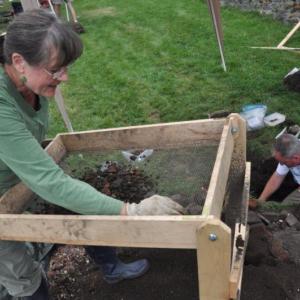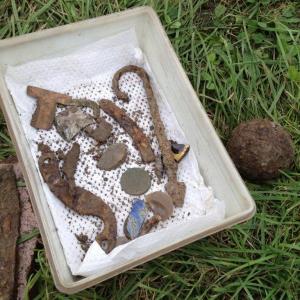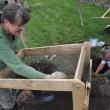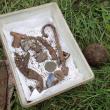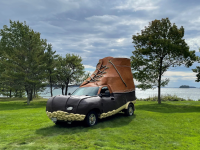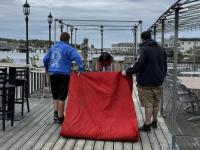'It's trash, but it's old trash'
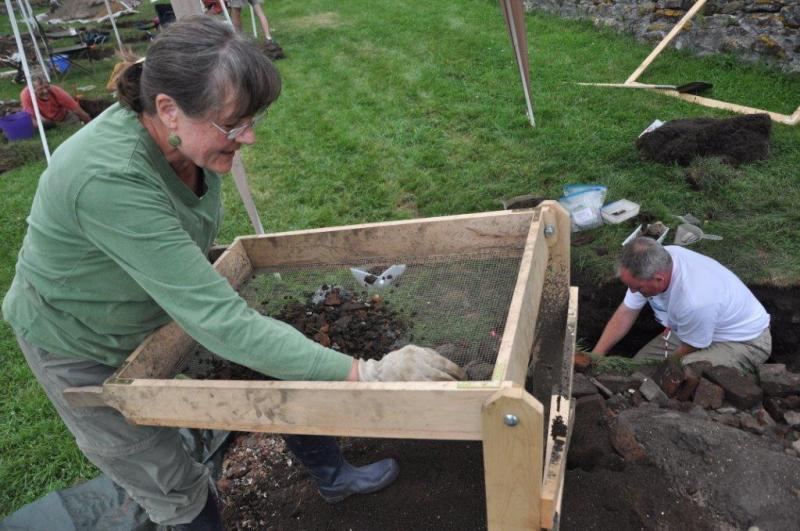 Kathy Bridge, left, sifts through debris while Tom Desjardin continues digging in a hole at Fort William Henry in Pemaquid. BEN BULKELEY/Boothbay Register
Kathy Bridge, left, sifts through debris while Tom Desjardin continues digging in a hole at Fort William Henry in Pemaquid. BEN BULKELEY/Boothbay Register
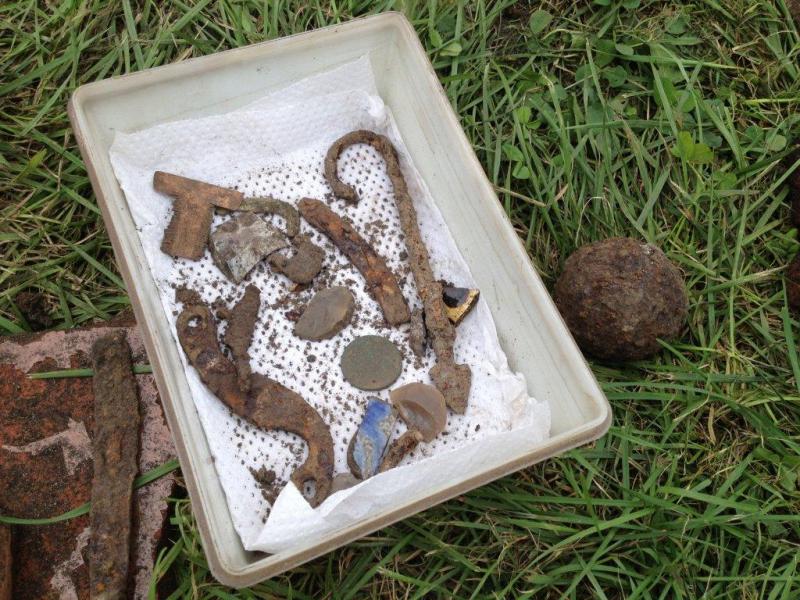 A small sample of the artifacts dug up from the ground in Pemaquid. Among other things, pictured are a musket flint, a lice comb, a coin, a fish spear and a swivel gun cannon ball to the right. BEN BULKELEY/Boothbay Register
A small sample of the artifacts dug up from the ground in Pemaquid. Among other things, pictured are a musket flint, a lice comb, a coin, a fish spear and a swivel gun cannon ball to the right. BEN BULKELEY/Boothbay Register
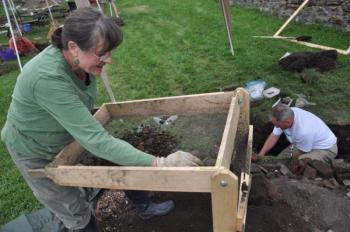 Kathy Bridge, left, sifts through debris while Tom Desjardin continues digging in a hole at Fort William Henry in Pemaquid. BEN BULKELEY/Boothbay Register
Kathy Bridge, left, sifts through debris while Tom Desjardin continues digging in a hole at Fort William Henry in Pemaquid. BEN BULKELEY/Boothbay Register
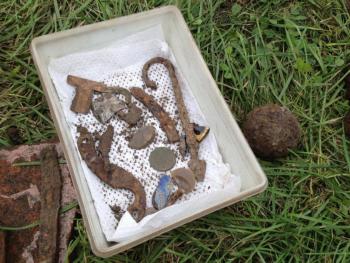 A small sample of the artifacts dug up from the ground in Pemaquid. Among other things, pictured are a musket flint, a lice comb, a coin, a fish spear and a swivel gun cannon ball to the right. BEN BULKELEY/Boothbay Register
A small sample of the artifacts dug up from the ground in Pemaquid. Among other things, pictured are a musket flint, a lice comb, a coin, a fish spear and a swivel gun cannon ball to the right. BEN BULKELEY/Boothbay Register
Like most treasure hunts, the archaeological dig at Fort William Henry in Pemaquid started with a treasure map.
The Friends of Colonial Pemaquid-sponsored dig may have started with a 300-year old map, but the intent wasn't to find doubloons or other rich stuff, but to find out what exactly lay just under the surface.
So far, so good, said principal archaeologist Lee Cranmer.
“We came right down on top of the wall, which confirmed a 17th century drawing,” he said. “All the artifacts we've found have only added more to the picture. We're very satisfied.”
The week-long dig, which yielded a large box of artifacts, will be mapped out, wrapped up and filled in by August 5.
The artifacts' journey from the ground to a display case is far from completed once it's been exhumed, Cranmer said.
“We'll clean it and catalog it all,” he said. “Then we'll write a report. You can usually assume that it's multiplied by four; if you're out here a week, it's going to take a month to clean and catalog it all.”
On July 25, Tom Desjardin, historian for the Maine Bureau of Parks and Lands, was knee-deep in a freshly dug hole.
In a small plastic basket near his hole, Desjardin had collected the tip of a fish spear, a musket flint, a delicate lice comb, pottery shards, a swivel cannon ball, pieces of a tea cup and a knife from where the enlisted troops' quarters were thought to be.
Each artifact and rusted relic helps fill in another corner of the puzzle, Desjardin said.
“If we find a pile of cannon balls, we know we've found the armory, or if we find a bunch of wine bottles, we'll have found the kitchen,” he said.
The team has been pulling cow, cod, sheep and pig bones from the ground. Fish scales the size of postage stamps from monstrous Atlantic Cod have been culled from the rubble as well, which flesh-out the diet of those who called the fort home.
With an abundance of bones and broken ceramics and some cutlery, Desjardin said it was possible the team had stumbled upon a cooking area, but that more research and digging would need to be done.
“Our hope is to get some grant money and come back next year for three or four weeks,” he said. “We've made a grid, so anyone can use the coordinates and say 'Oh, they've already dug there, let's move over a little.'”
Although large swaths of the fort have been excavated, there is still more to be learned from an area untouched my human hands for several hundred years.
Through the artifacts, a small tale of what happened has started to present itself, Desjardin said. Not unlike a lot of New England settlements it has been constructed, abandoned, ransacked, rebuilt, evacuated and demolished, Desjardin said.
The fort was built in 1692, then emptied and torn down at the behest of 100 French soldiers and 600 Native Americans four years later.
In 1729 the fort was again built up near a village of 300 Protestant Irish families, but three years later it was abandoned.
It met its final demise in 1775 or 1776, not at the hands of Native Americans, French or British soldiers but by locals who feared it would be used against them in the Revolutionary War.
“Everything we've found is consistent with the time line,” Desjardin said. “There are things from a 20- to 30-year time period.”
Almost anything of useable value, such as ammunition, alcohol, hatchets and other tools, would have been hauled-off when the fort was ransacked, leaving just garbage and anything deemed not immediately useful.
“It's trash, but it's old trash,” Desjardin said. “And, it's all in situ – in its original place.”
Ben Bulkeley can be reached at 207-633-4620 or bbulkeley@boothbyaregister.com. Follow him on Twitter: @BBRegisterBen
Event Date
Address
United States

